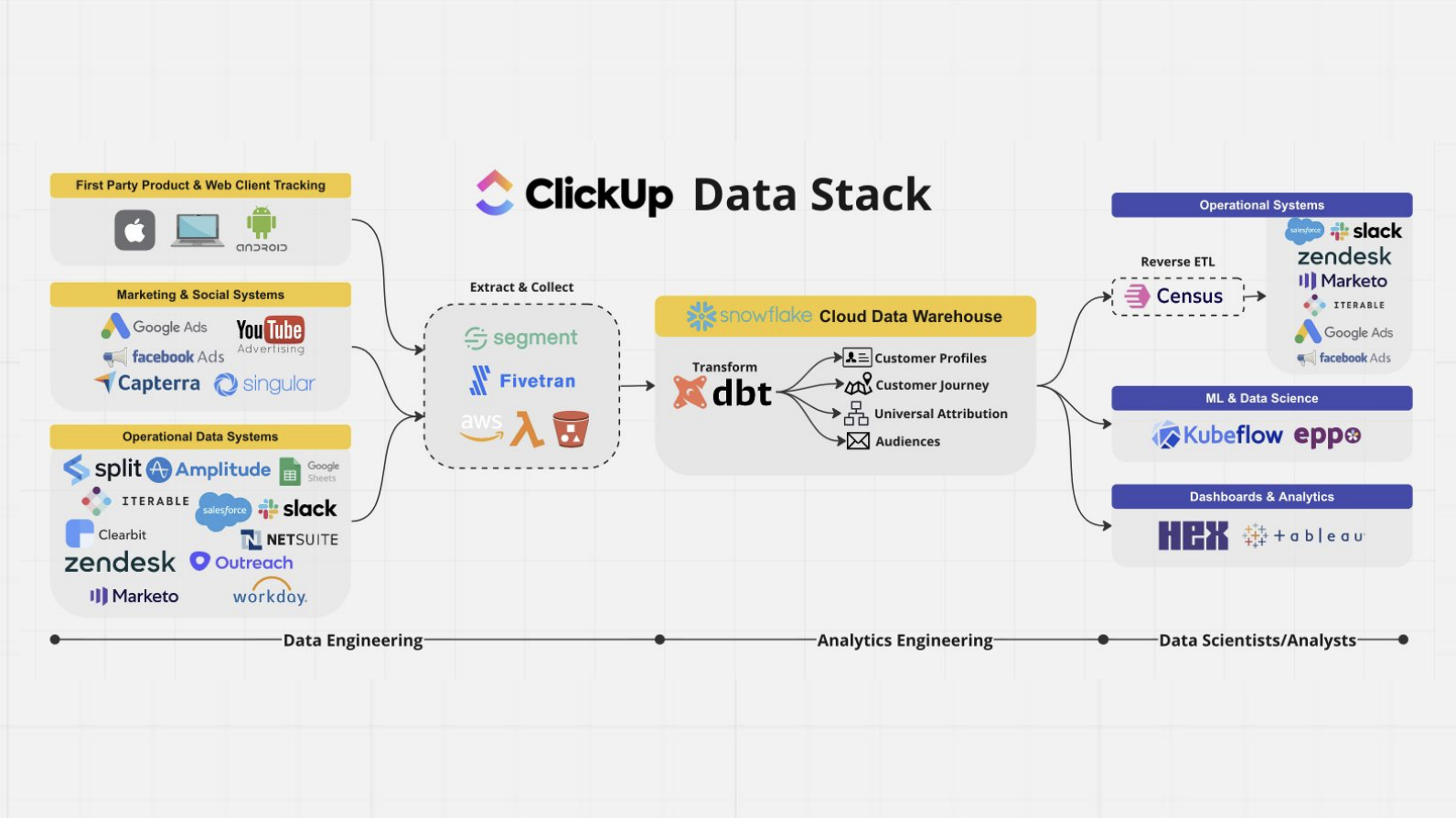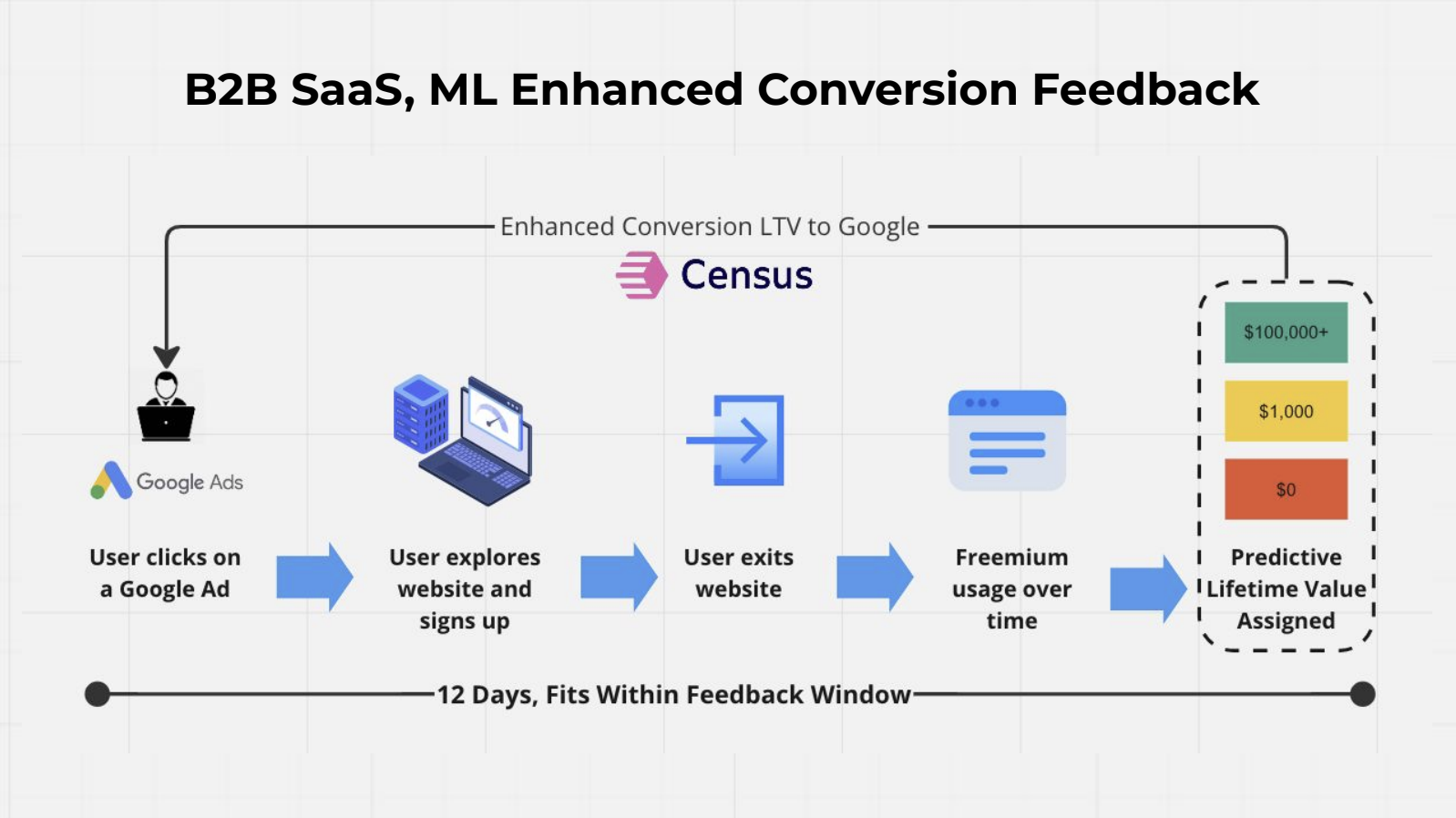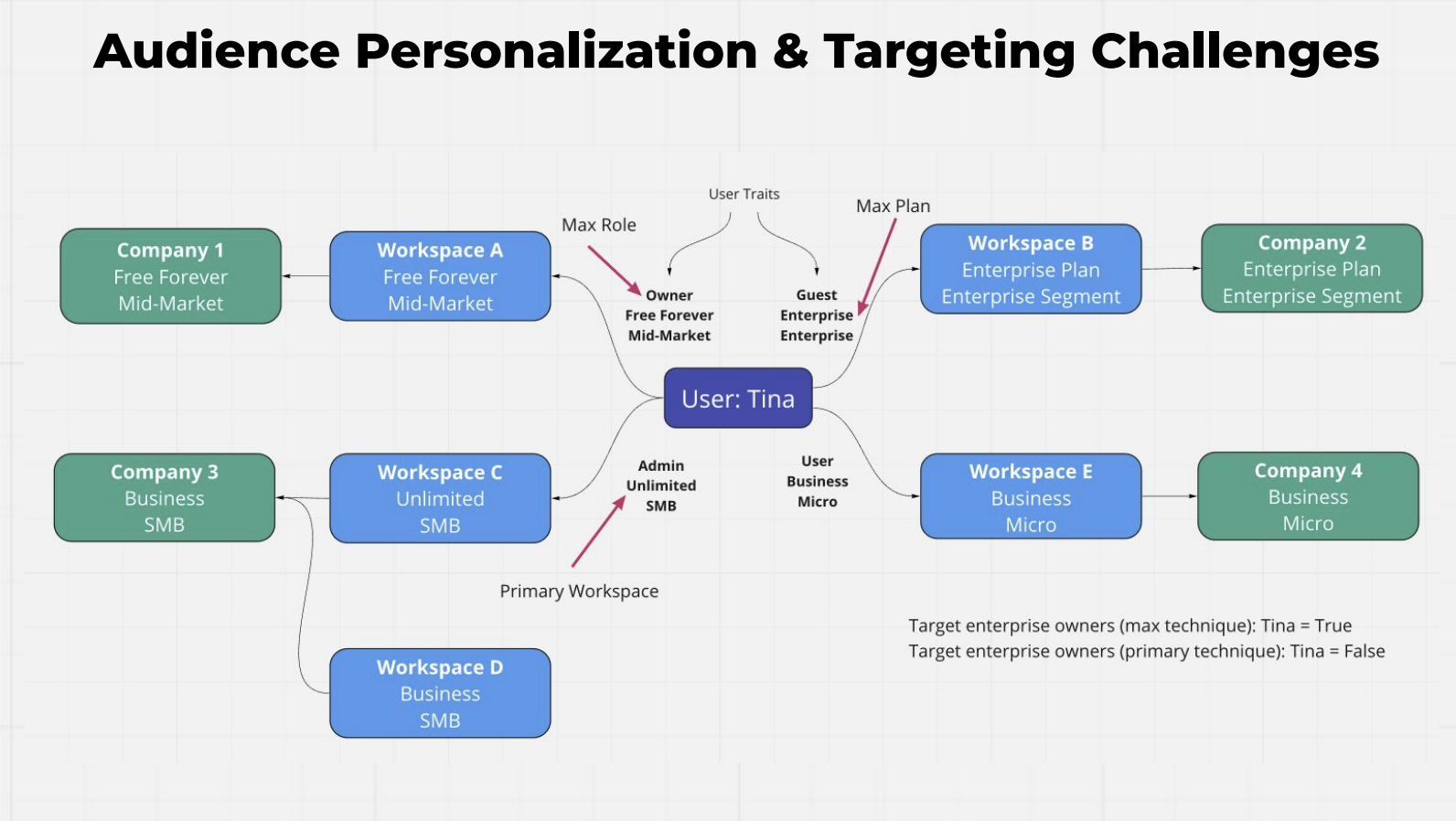TL;DR:
- ClickUp implemented a data warehouse-first strategy to optimize ad campaigns and reduce CAC by 50%.
- ClickUp powered cutting-edge email personalization and omnichannel audience engagement with first-party data and their warehouse.
- Third-party cookie deprecation has made it challenging for marketers to create high-performing campaigns.
- Cloud data warehouses are essential for unlocking the power of first-party data and driving revenue.
Two marketing metrics – Customer Acquisition Cost (CAC) and Return on Ad Spend (ROAS) – are responsible for more sleepless nights than any other numbers performance marketers obsess over.
Generating high-quality leads on a lean budget is the name of the game. The objective is clear to marketing leaders – you have to squeeze every last drop of return from your ad spend, or else.
While expectations have never been higher, performance marketers increasingly find themselves without the information they need. Third-party cookie deprecation alone leaves systems like ad networks and email marketing tools unable to track the success of your campaigns as they used to.
To adapt, you need to supplement these systems with first-party data – the data your company collects about your prospects and customers – to tune and optimize marketing campaigns.
Modern martech tools have the power to improve CAC and ROAS. These tools enable performance marketers to target audiences with relevant campaigns, but not all of them fully unlock the power of first-party data. The best of these approaches leverage your data warehouse, where the highest quality, most valuable audiences, and conversions are already stored.
Marc Stone, VP of growth and data at ClickUp, spoke at ConCensus 2023 about how his warehouse-first data strategy drives returns to ClickUp’s bottom line. ClickUp implemented a revolutionary approach to Google and Facebook Ads conversion tracking to cut customer acquisition costs by a jaw-dropping 50%. With their data warehouse, ClickUp can manage audiences and ensure consistent messaging to users across email, ad networks, and sales touchpoints.
Below, we'll breakdown why the cloud data warehouse and first-party data are at the heart of outstanding marketing results, as well as two use cases ClickUp rolled out thanks to their data:
- Optimized ad campaigns (with a 50% Reduction in CAC)
- Personalized email outreach and omnichannel audience management
Here are some of Marc's lessons so you, too, can replicate ClickUp’s success.
First, ROAS marketing strategy starts in the cloud data warehouse
To get awesome returns at the end with first-party data, you have to start at the single source where all your customer data lives – the data warehouse.
“Data warehouses are uniquely great at aggregating cleaned events from all over your stack,” Marc explained. “And while you can use a lot of stuff like CDP, the advantage of having the warehouse at the core is you can go back in time if there’s a system or event you forgot.”
ClickUp utilizes a “Composable CDP” approach with its data warehouse at the heart of its marketing technology strategy. They aggregate customer data into a single data warehouse (Snowflake), create a single source of truth in this one location (with dbt), and then serve this first-party data to marketing tools using Census.

|
Working together, the marketing and data teams can identify a comprehensive customer profile and journey. By unifying data from as many systems as possible, ClickUp links users across platforms like Iterable for email marketing, Salesforce for sales, Google Ads for spend, and Segment for website interactions.
“We want to monitor all the interactions that anyone has with our business, regardless of what system that interaction occurs in,” explains Marc. “That's something that we've had a great deal of success in doing in Snowflake.”
You can refine your audience targeting and email personalization with more complete customer data. The better your targeting, the better ROI marketing can deliver, particularly the ROAS in your paid channels. When you unlock your holistic customer information via a Composable CDP, you can perform more personalization and automation when creating or reviewing a campaign.
Use case #1: Optimized ad campaigns = 50% reduction in Customer Acquisition Costs
Marketing platforms like Facebook and Google Ads are built to help marketers get the lowest cost per click. The platforms have machine learning systems eager to help you boost your profits.
But before they can help you, you have to help them. These machine learning models need a lot of data – what kind of traffic they send to your site, which traffic converts, and the value of those conversions. Without that information, the platforms will struggle to maximize ROAS on your behalf.
The results can be transformational when you provide the platforms with better information. Using Census to feed these powerful machine learning systems with information from Snowflake, ClickUp cut its customer acquisition costs by 50% in just six months.
ClickUp’s advertising challenge: Timing.
You must give fast feedback to Facebook and Google Ads so that they can optimize on your behalf. For example, you only have about 14 days after the ad click to optimize a Google campaign if you’re going to get full advantage of the platform’s machine-learning power.
“ClickUp is a B2B freemium product. People can use it for months on end and not pay for it until much later,” Marc said. “But we can use the data warehouse and some advanced functionality to overcome that challenge and supercharge our marketing to greatly lower the cost structure.”
A typical user journey at ClickUp might start with a user clicking a Google ad. Once on the website, they sign up for the free tier of the product. They lightly use it for a few weeks, decide they like it, and return to complete the purchase.
“You could use us for nine months and not send a conversion,” Marc said. “But we can use the data warehouse and some advanced functionality to overcome that challenge and supercharge our marketing to greatly lower the cost structure.”
Instead of waiting months for a paid conversion, Marc’s data team works with their marketing team to pull the future forward. First, they predict the expected Lifetime Value (LTV) of an individual workspace “owner” using data from the user’s first 12 days of activity. They store these predictions directly in Snowflake. Then, they use Census to send the expected LTV values to Google and Facebook Ads as conversion values, which optimize the campaign that generated the lead.

|
“None of this relies on the user’s browser or cookies, and we get a much higher quality match over time,” Marc explained.
Use case #2: Personalized email outreach and omnichannel audience management
Marketing personalization is table stakes but high risk. The data you use to personalize the email cannot be wrong, or you look like you don’t know your customer.
Personalization can also be deceptively challenging, particularly in a company like ClickUp, where a single user can belong to multiple workspaces. Imagine a hypothetical user who administers a free ClickUp workspace but also belongs to a paid enterprise workspace as a guest. If your Martech platform can’t keep track of those segments, you could send the user an email meant for the admins of a paid enterprise plan. Since the user doesn’t administer a paid workspace, she’ll have a confusing or frustrating experience with that campaign.

|
“Modeling this out and creating audiences in a system like Customer.io or Iterable or Marketo gets very complex,” Marc said. “A relational database and a data warehouse is perfectly built to handle this sort of a challenge.”
ClickUp models their customer data in Snowflake using dbt, and the Census Audience Hub to create audiences. With Census, ClickUp supercharges email personalization by defining customer data and audience segments in one central place and then manages those audiences across email, advertising, and even sales channels.
“Often you’ll have a multifaceted campaign that needs to target the same users across many different touchpoints. What we’ve been able to do in the Census product is finally have a system where we can create centralized audiences for all our different platforms and share out that audience to whichever system needs it.”
Unlock envy-worthy ROAS with your cloud data warehouse
If you want a single, up-to-date source of truth for your first-party customer data, the cloud data warehouse is your best option and the most important tool in your performance marketing toolbox. It’s the foundation for relevant advertising and email campaigns, especially as out-of-the-box marketing tools fail to adapt to how you work with your customers and the deprecation of antiquated data collection methods like third-party cookies.
Data and marketing teams should join together to build a tech stack that can access and fully use their rich customer data centered around the cloud data warehouse. Doing so will return awesome insights into customers and unlock massive marketing ROAS.
By doing so, “the data team becomes a more active player in the business than somebody who's just creating dashboards or reporting on KPIs,” Marc ends with. “We're directly improving our sales and marketing teams.”
Want to learn more from Marc and the ClickUp team? Check out his full session from ConCensus2023.
Ready to build the next generation of exceptional marketing at your company (and reduce your customer acquisition costs, too)? Check out how Census gives marketers data superpowers.

















